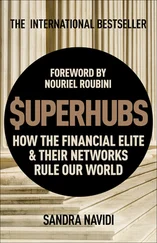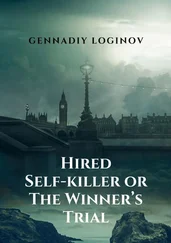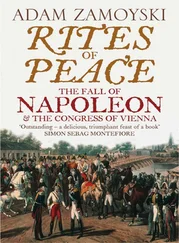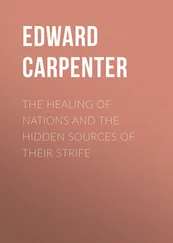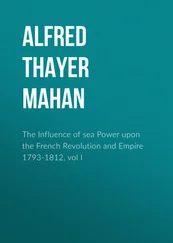According to Barruel, the Illuminati were well organised and intelligent. In the interests of making useful converts to their cause they would gather information on persons of influence, meticulously recording their likes and dislikes, dietary preferences, sexual habits and so on, so as to be able to approach them in the most appropriate way, to manipulate them, and even blackmail them. They also meant to introduce women into their order, in two separate categories: one of virtuous high-born ladies who would help to make converts and raise money, the other of dissolute women and prostitutes who would pander to the needs of the members.
Barruel’s book was not meant as history: it was a clarion call demanding action. He warned that ‘the French Revolution is still no more than a trial of strength for the sect; its conspiracy covers the entire universe’. It was already preparing the subversion of other states, sending out envoys and using Masonic networks in countries the French were intending to invade – he claimed there were five hundred adepts in London waiting for the signal to act. ‘It is still possible to crush this sect which has sworn to destroy your God, your motherland, your families and the whole edifice of your communities,’ he warned his readers, but time was running out and they must face up to the threat. ‘The danger is certain, it is continuous, it is terrible, and it menaces each and every one of you,’ he hectored.15
The Anglican minister and distinguished astronomer Francis Wollaston, Fellow of the Royal Society, wholeheartedly agreed. ‘To the liberty and equality of original Freemasonry; to the fierce rancour of Voltaire and his self-called philosophers against Jesus Christ and his religion; to the democratic principles of Rousseau, and his visionary schemes about the origin of all government’, the Jacobins had added ‘the rage of Weishaupt and his pretended more enlightened followers, against all kings, or rather against all who under any title bear any rule among men’.16
If educated people could view what was taking place in such wildly conflicting ways, it is hardly surprising that the ignorant and those living in rural areas adopted even more extreme positions. While some embraced the new shibboleths of freedom and the sovereignty of the people as though they were a new religion, others saw them in terms of Satanic wickedness threatening everything they held dear. Rumour and imagination conjured dread of what one historian has recently described as ‘the eighteenth-century equivalent of a Martian invasion’. The word ‘Jacobin’ joined those of ‘Freemason’ and ‘Illuminato’ in the conservative canon of horrors, and came to stand for any member of what was increasingly referred to as the ‘sect’. Blind fear set the seal of veracity on untested assumptions, and in the prevailing psychological climate every coincidence had the power of proof: there is a point at which fear becomes a social pathology that floats entirely free of evidence. A powerful conviction took root in conservative thought that a vast conspiracy was afoot. The concept of an occult association working for the overthrow of the social order entered the imagination, never to leave it.17
Having alerted society to the danger, Barruel suggested how it should be met. As the Jacobins were waging ‘a secret war of delusion, error and darkness’ against the mind, people should respond with ‘wisdom, truth and light’. As they were unleashing ‘impiousness and corruption’ against the faith, the faithful should respond with morality and virtue, and strive to convert the enemy. ‘The Jacobins are waging on Princes and the Governments of nations a war of hatred of the law and society, a war of rage and destruction, I want you to oppose them with society, humanity and conservatism,’ Barruel wrote.18
Princes and governments did not heed his advice. Their response to the events unfolding in France was dictated almost entirely by fear, and fear breeds irrationality and aggression. It thrives on the notion that aside from identifiable threats there are others lurking in the shadows. The need to uncover these unknown dangers and to identify them becomes compulsive. This, and the compulsion to strike back at the source of their fears, was to dominate their policies over much of the next half-century, and was to play a decisive role in transforming the way European societies ordered themselves.
No European state was remotely prepared to meet the challenge posed by the French Revolution, let alone that suggested by Barruel and other conspiracy theorists. Rulers and ministers interfered minimally in the lives of the majority of their subjects: cities administered themselves, outside them a semblance of order was maintained by a combination of local nobles, parochial institutions, religious constraint and custom. Central organs of control barely existed. The French monarchy had introduced a force dedicated to maintaining order when, in 1544, it set up the Maréchaussée (marshalcy), a body of mounted men whose task was to keep roads safe and an eye on who was using them. Paris acquired police in 1667 to contain the plague then ravaging the country. Police commissioners were appointed in St Petersburg in 1718, Berlin in 1742, and Vienna in 1751. But the word ‘police’ is misleading.
In his monumental four-volume Traité de la police , published in Paris between 1705 and 1738, Nicolas de La Mare explained that ‘police’ meant the ordering of public space for the benefit of all who occupy it. The word encompassed the regulation of the width, length and layout of streets, the way they should be signposted, lit, repaired, swept and sprayed with water on hot days; how houses should be built and how they should be lived in so they did not present a danger to anyone (people should not place flowerpots on their window ledges lest they fall and cause injury). It stood for laying down precise instructions as to how food was to be produced, transported, processed and sold; how livestock was to be slaughtered and dressed; how and where fish could be caught, with what tackle, and how they were to be salted and preserved; how gardens were to be cultivated and what was to be grown in them; how firewood and coal were to be procured and stored; what precautions were to be taken against flooding; how industry was to be carried on in the urban space; how wine shops and eating houses were to be run; how standards of hygiene were to be maintained in brothels and prostitutes checked for disease – in other words, everything necessary to keep the citizens fed, healthy and safe.1
In the course of the eighteenth century the Paris police extended their brief, building and supervising markets, a stock exchange, a fire service, a veterinary school and a hospital. They regulated every trade, and obliged practitioners to wear their identifying plaque . They set up the Mont de Piété, a nationwide network of pawn shops that would not cheat the poor. They intervened in family disputes and put away troublemakers and brutal husbands. In the interests of containing the spread of venereal disease, they classified prostitutes – according to age; who had recruited them, how, when and where; by their state of health; their specialities and their clients – and expended much energy on catching unlicensed ones.2
Only rarely did governments extend the concept of ‘police’ to embrace the political. In the reign of Elizabeth I, Sir Francis Walsingham used ‘intelligencers’ to detect plots against her. Cardinals Richelieu and later Mazarin operated similar networks to deal with the dissident nobility of the Fronde . The Russian monarchy introduced laws to make its subjects denounce each other. The Habsburgs set up a regular secret police service in 1713. But what these bodies focused on was the detection of conspiracies by leagues of nobles against the ruler, not information on what his subjects thought. The established Churches were more concerned with such things, but as the state gradually took over from these as the guardian of morality and conscience, so the police began to take on a more sacerdotal role. It was only in the second half of the eighteenth century, when debate about the way the world was constituted and organised began to involve more than a tiny educated elite and the opinions of greater numbers of people began to matter, that the authorities applied themselves to the task of finding out what these might be.
Читать дальше

